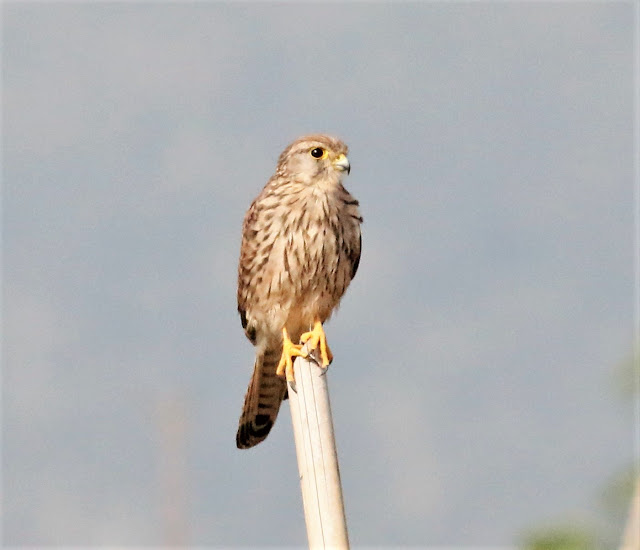In ancient times, the worshipping of animal deities transcend across various cultures of the world. In ancient Egypt, birds for example are considered avatars of the Gods. Watching wildlife in action was like watching an orchestra playing in the jungle. It creates a sense of happiness, serenity and freedom but yet vulnerable in a world full of uncertainties and dodgy characters !
Here are some fascinating photos of nature, birds, lizards etc to wrap-up this incredible year. Hold your breath and enjoy the pleasure of viewing the various colors of nature.
 |
| Dark-Throated Oriole (Male) |
Always my favorite jungle bird. Although it has a repertoire of calls but i believe most birds would generally make 3 types of calls. They are: i) alarm calls, ii) mating calls/songs and iii) hunger calls. This male Dark-Throated Oriole was heard making some mating calls at a nearby female.
They would certainly make some nice X'mas tree decos.
 |
| Rufescent Prinia |
According to the field guides, a greyish head means that it was in a breeding mood.
 |
| Pink-Necked Green Pigeon |
In my younger days, i would often heard local village folks calling them "Punai Daun" or literally translated as "Leaf Pigeon". This was probably due to their colors resembling some green leaves. When i joined the birding society, i realised that there were many more pigeons which look like "Punai Dauns". The local name for this bird at the moment is "Punai Kericau" (Wells, 1999).
 |
| Purple-throated Sunbird |
Errrr i know what you will be thinking ! Don't worry just say it loud cos Uncle Sam would not be bothered. They are as big as a coconut.
 |
| Grey-headed Canary Flycatcher |
You can hear them more often from November to December in this region. Essentially a forest bird.
Hello i am up here ! says Buff-Vented Bulbul (Iole crypta)
Every child bearing parents will have high hopes that their children will be given an opportunity to enjoy the meaning of life when they grow up.
Some people called it a forest dragon and it is certainly an uncommon lizard. A separate post on this reptile will be done in due course.
Copper-Cheeked Frog or also known as White-lipped Frog (Hylarana labialis). Local name for this frog for the time being is: "Katak Bibir Putih" (Norhayati, MYBIS, Dec 2017)
A silhouette of a Yellow-Breasted Flowerpecker
This is a Common Sun-Skink (Eutropis multifasciata)
Thanks to the effort of some local experts, i was able to identify the above odonata.
Attention ! The national anthem is playing now says Streaked Spiderhunter.
This is a Common Sun-Skink (Eutropis multifasciata)
 |
| Spine-tufted Skimmer (Orthetrum chrysis) - male |
Thanks to the effort of some local experts, i was able to identify the above odonata.
Attention ! The national anthem is playing now says Streaked Spiderhunter.
 |
| Pale-Blue Flycatcher (male) |
This male Pale-Blue Flycatcher colors are simply amazing. No color additives were added to the photo. Its pure blue as it was shown here.
 |
| Mangrove Blue-Flycatcher (Male) |
 |
| Mangrove Blue Flycatcher (female) |
The above Mangrove Blue Flycatchers have been the ambassadors in the same location for many years. Attracting and greeting many locals and foreign birders alike.
This is a common Brown Shrike. You could guess that it should be a juvenile female from her fine vermiculations which can be seen here at her flanks.
ENJOY NATURE
&
HAPPY BIRD WATCHING !



























































